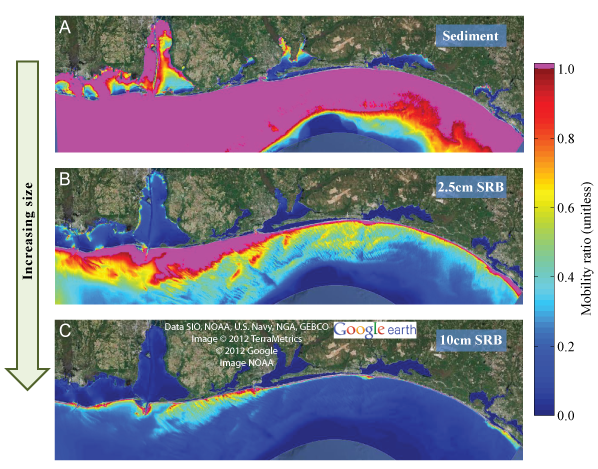U.S. Geological Survey Open-File Report 2012-1234
Application of a Hydrodynamic and Sediment Transport Model for Guidance of Response Efforts Related to the Deepwater Horizon Oil Spill in the Northern Gulf of Mexico Along the Coast of Alabama and Florida
Title Page | Contents | List of Figures | List of Tables | Conversion Factors | Abbreviations | Executive Summary | Introduction | Methods | Results | Digital Data Files | Discussion | Summary and Conclusions | References Cited | Appendix 1. Scenarios | Appendix 2. Example Model Input Files | Appendix 3. Calculations of Mobility and Potential Flux | Appendix 4. File Naming Conventions | Appendix 5. Time Step of Maximum Ebb and Flood for Inlets in the Model Domain
 |
||
| Figure 31. Mobility ratios (table 2, metric 5) of A, 0.03-centimeter (cm) quartz sand (sediment); and B, 2.5-cm and C, 10-cm surface residual balls (SRBs) under large wave (more than 2-meter) conditions in the northern Gulf of Mexico alongshore Alabama and Florida corresponding to scenario H5_D8 (fig. 2). Where the mobility ratio is 1 (pink areas), the SRB mobility threshold is exceeded. Sediment is more mobile than centimeter-sized SRBs, with mobility decreasing with increasing SRB size. | ||